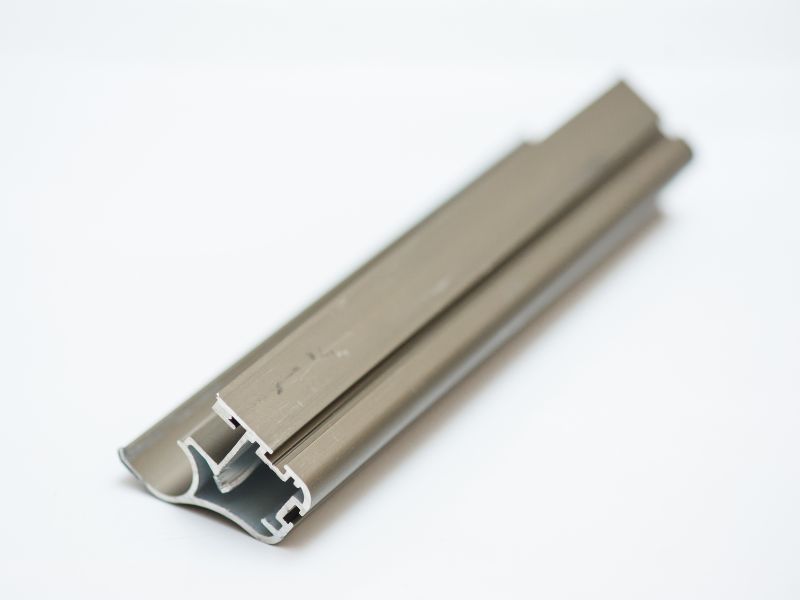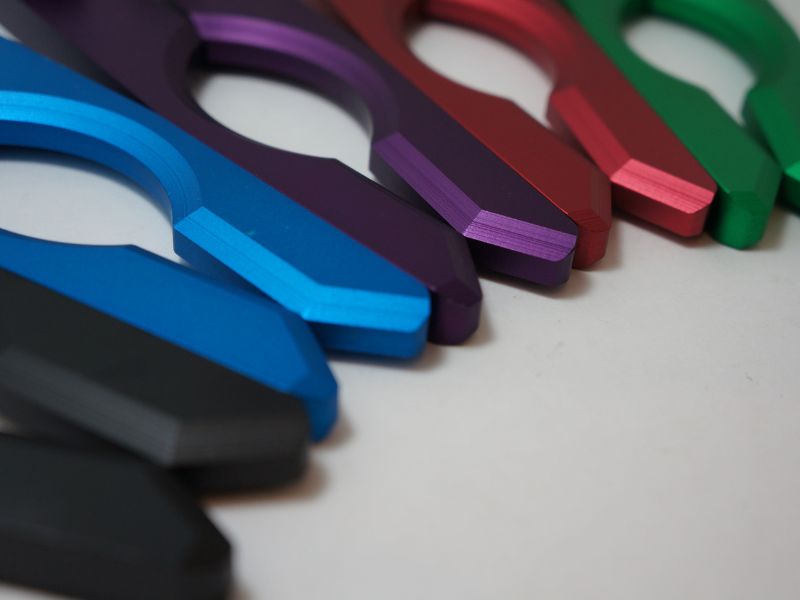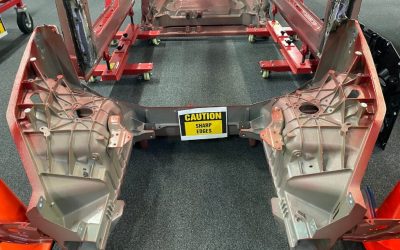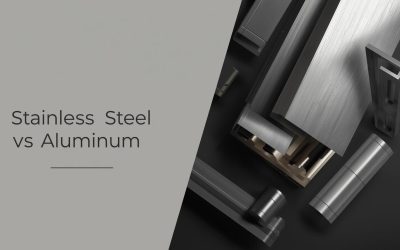What is black anodized aluminum
Black anodized aluminum Process is carried out on aluminum parts to produce protective layer which is hard in nature. In order to increase the appealing of the object, layer produced is dyed into different colors. This will increase the aesthetics of the products. In general practice the aluminum part is first anodized and after that an appropriate dye is used to dye it black. By carrying out black anodizing process on aluminum parts will accomplish an aesthetic appeal in black or functional black color.
In addition to that black anodizing surface finish also enhance the durability, wear resistance as well as the corrosion resistance of the aluminum casting part. These beneficial attributes make black anodized surface finish a choice in coating and finishing the parts which are used in automotive and aerospace industries. Moreover, it can also be applied to everyday objects including home appliances and furniture.
Fundamentals of Anodizing Process
Anodizing is an electrochemical passivation process which is utilized to improve the thickness of oxide layer on metal parts. The part which is under treatment is made anode of the electrolytic cell, to that end this cycle is called anodizing. It will transform the metal surface into high performing surface which is durable. The deposited protective oxide layer makes the metallic part extremely hard and durable, improving its corrosion resistance.
Anodizing Process
Anodizing is an electrochemical process in nature. In this process the metallic part which is made anode get an oxide layer on its surface. In simple words anodizing is the extremely controlled enhancement of a naturally occurring phenomenon which is called oxidation. The aluminum at very low temperatures is submerged in an acid electrolyte solution through which electric current is carried out by connected electrodes.
That will provide a hard coated surface with outclass performance. However, the metal remains porous, which allows it to be colored, sealed, or if any further process is required to be carried out that can be done as well as per requirements.
Anodizing Process Types
There are three types of anodizing processes:
Chromic Acid Anodizing (Type I)
In this type aluminum is immersed in a chromic acid bath and running an electric current through the solution. Although the anodizing layer formed by chromic acid is thinnest of the three types but still metal possess equally good protection against corrosion if properly sealed. Chromic acid anodizing absorbs less color when dyed and for that reason this type is not recommended in such applications where aesthetics is the prime importance. The temperature of the chromic acid needs to be raised if metallic part is required to be dyed in black color.
Sulfuric Acid Anodizing (Type II)
This is the most common type of anodizing surface finish process. In this type aluminum is immersed in a sulfuric acid bath instead of chromic acid bath and running an electric current through the solution. This anodizing type creates thicker layers as compared to chromic acid anodizing which leads to improved resistance to various forms of wear including abrasion. Furthermore, sulfuric acid anodizing creates deeper pores in the oxide layer which allows more dye absorption into the metal part thus providing more color alternatives than chromic acid anodizing.
If you are looking for this type of black anodized aluminum parts, you are welcome to contact, we can offer you black anodized aluminum casting parts, as well as other aluminum surface finishes.
Hard coat Anodizing (Type III)
Hard coat anodizing as the name indicates produces a very hard, dense, and relatively thick coating. This anodizing type is used in such applications where a super hard surface is required. Hard coat anodizing process is similar to Sulfuric acid anodizing, however higher voltage and low temperatures are applied to produce oxide layers in this type of anodizing. Hard coat anodizing is preferred where a metal is subjected to corrosive or strenuous environment because of its durable layer. Moreover, it also finds its application where advanced electrical insulation is a primary concern.
There are more suface finish to the aluminum parts, such as black nickel electroplating, clear anodizing aluminum, pwoder casting aluminum, painting surface finish etc.
Aluminum Black Anodizing Process
Black anodizing aluminum process enhance certain useful properties like corrosion resistance, wear resistance and looks of the finished products which is the result of oxide layer formed on the surface of aluminum. This process is electrolytic in nature in which aluminum surface is converted into a durable oxide layer. This is achieved by anodizing and then dyeing aluminum which is then followed by sealing the color within the pores of the coating.
Black anodized aluminum bears strong performance properties along with a premium appearance. Anodized aluminum possesses improved and enhanced wear and corrosion resistance, while black anodized aluminum has the additional qualities of thermal stability by absorbing the light and radiating the heat in a very efficient way.
The process consists of first cleaning the surface of aluminum part, then subjecting it to normal anodizing process and after that dyeing it black through a semi-porous aluminum oxide layer. This includes following major steps:
1. Preparation of the Surface
In order to ensure the uniform adhesion of anodized layer aluminum surface is completely cleaned before starting the anodizing process
This preparation is typically carried out by these three steps:
a) Degreasing process
Solvents and alkaline cleaner are used to remove grease, oils and other contaminations in this step.
b) Etching process
The aluminum is immersed in a solution of sodium hydroxide to remove the natural oxide layer and any impurities if present, giving the surface a matte finish.
c) Desummting process
Removal of residues and smut formed during etching, often using an acid solution like nitric acid.
2.Process of Anodizing
Commonly anodizing is carried out on the outer layer of aluminum part after the cleaning activity is finished. An acidic electrolytic bath containing sulfuric acid is utilized for anodizing cycle and aluminum part is put in that bath. Chromic acid or phosphoric acid can likewise be utilized as electrolyte relying upon the application and necessity. By applying the direct current, with the aluminum part behaving as the anode, oxygen particles from the electrolyte combine with aluminum molecules on atomic level, and aluminum oxide is formed. The thickness and properties of the oxide layer relies upon the anodizing conditions, including current thickness, temperature, and time.
3. Black Anodizing (coloring)
The aluminum part will have a semi-porous surface structure once it has been anodized. These pores in the surface structure are used to store the black dye. However, in order to accomplish the dark tone, the anodized aluminum is exposed to a process of coloring. Nonetheless, at least 25 microns thickness or more is prescribed to accomplish ideal color fastening. There are three primary methods for achieving black anodization.
Organic Dyeing Process: In this method the porous anodized layer is dyed using organic dyes. This technique includes dissolving the colors in warm water first and afterward being added to the color bath. Aluminum which is anodized is placed into the coloring bath, at this position colors enters into the Pores of anodized layer. The color’s retention relies upon pore size and the coloring conditions. Black coloring requires extra coloring time as compared to lighter tones. However, the metallic parts which are colored by organic coloring technique are not suggested for open air utilization.
Inorganic Dyeing Process: The pigments which are inorganic cannot be made water soluble. However, Inorganic pigments produce coatings with excellent light fastness. Common inorganic black dyes include cobalt or nickel salts. In order to achieve black anodizing, parts can be produced with inorganic salts of cobalt sulfide.
Electrolytic Dyeing Process: This strategy includes utilizing metal salts (like cobalt or nickel) in a secondary electrolysis process. After the underlying anodizing step, the part is drenched in a metallic salt bath, and an alternating current (AC) is applied to deposit the metal into the pores hence making a dark tone. Generally, the aluminum part after standard anodizing is placed into another electrolysis bath containing metal salts. In this bath the anodic layer serves as the cathode, and an electrode made of stainless steel is placed into the bath. The metal salts then subsequently deposit at the bottoms of the pores when alternating current (AC) is applied
4. Sealing
After coloring, the anodized layer’s pores are sealed to enhance durability, to prevent color leaching and to lock in the color. Sealing hardens the coating and prevents color from being bleed out and getting fade. Proper sealing is essential to achieve the maximum color durability. Sealing methods include hot water sealing, nickel acetate sealing and steam sealing.
Hot Water Sealing: This method consists of immersion in boiling deionized water, which hydrates the aluminum oxide and after that closes the pores.
Nickel Acetate Sealing: This method consists of immersion in a nickel acetate solution, providing additional corrosion resistance.
Steam Sealing: This method consists of exposure to steam, achieving similar results to hot water sealing.
5. Final Inspection and Finishing
The anodized and sealed parts are then inspected for uniformity, color consistency, and surface quality. Finishing steps, such as rinsing and drying, are completed to prepare the parts for onward use.
Benefits
Black anodizing aluminum offers several significant benefits, making it a popular choice in various industries. Here are the detailed advantages:
1.Corrosion Resistance improvement
Anodizing the aluminum, expands its protection in corrosive environments. The anodizing system makes a thick oxide layer that safeguards the underlying metal substrate from openness to natural components, for example, dampness and salt, which can be the reason of rust and disintegration. Black anodizing, specifically, is most of the time utilized in marine and aviation applications where high protection from corrosion is an extremely huge variable to be thought of.
2. Enhanced Aesthetic Appeal
Black anodized aluminum gives a smooth and uniform appearance, which is profoundly alluring for consumer items, engineering components, and auto parts. This gives an appealing matte dark finishing for cosmetic and decorative items. It offers an upscale, powder-coated finishing at low cost. The black finish can be achieved consistently across large batches, ensuring a high-quality look and feel.
3. Increased Surface Hardness
The anodizing system fundamentally builds the surface hardness of aluminum parts. This makes the metal more impervious to wear and scraped spot, expanding the life expectancy of parts utilized in high-friction conditions. For instance, black anodized aluminum is ordinarily utilized in bicycle parts, camera gear, and devices where toughness is of great importance.
4. Better Thermal Insulation
Black anodized aluminum has better thermal protection properties as compared to non-anodized aluminum. The applications where heat distribution is critical this provides huge benefit, for example, in heat sinks for electronic gadgets.
5. Electrical Insulation
The anodized layer on aluminum surface behaves as an electrical insulator, which can be helpful in electronic and electrical applications where it is required to avoid electrical conductivity. This can altogether help in making more secure and more reliable electronic gadgets.
6. Environmentally Friendly and Non-Toxic
The anodizing system does not include any unsafe chemical substances and produces a steady oxide layer which is non-harmful. Hence this makes black anodized aluminum appropriate for significant utilizations of the food and clinical applications, like cookware and clinical gadgets
7. Enhanced Adhesion for Adhesives and Paints
The permeable nature of the anodized layer on aluminum surface takes into account better grip of paints, colors, and glues. This implies that any extra coatings or finishing applied to black anodized aluminum will stick better, giving a long-life span.
8. UV Resistance
The Black anodized layer offers great protection from bright (UV) radiation, which keeps the aluminum from deteriorating when exposed to sunlight for a long time period. This makes it ideal for outside applications, including compositional designs and open-air furniture.
9. Lightweight and Strong
Anodizing does not add significant weight to aluminum, maintaining its basic lightweight properties. This is critical for industries like aerospace and automotive, where reducing weight is essential requirement for performance and efficiency.
10. Cost Effective
The anodizing system is somewhat financially savvy when compared with other coating systems. The toughness and exceptionally low support prerequisites of black anodized aluminum bring out lower long-haul costs.
Limitations
Black anodizing of aluminum, while offering many advantages, has a few restrictions too.
1.Thickness Control
Controlling the thickness of the anodized layer is most important. In the event that a layer is too thin it may not give sufficient protection or color, while too thick a layer can become brittle and inclined to breaking. The anodizing system can lessen the fatigue strength of aluminum parts. The hard, brittle nature of the anodized layer can prompt micro-cracks that grow under cyclic loading conditions.
2.Chemical Resistance
In spite of the fact that anodizing builds protection from corrosion and wear, the anodized layer can be prone to specific synthetic and chemical compounds, which can deteriorate the anodized layer and afterward that can result in breakage.
3.Color Fading
Over the timeframe, particularly when exposed to UV light, the black color utilized in anodizing can get fade and blur hence decreasing the stylish looks of the finished item.
Applications of black anodizing aluminum parts
Black anodized aluminum is generally utilized in different enterprises as a result of its improved strength, durability, corrosion resistance and good looks. Major applications consist of the followings:
1.Electronics Equipment
In electronic industry it is regularly utilized for the housings of electronic gadgets like PCs, cell phones, and audio hardware where toughness and a smooth proficient appearance is important.
2.Automotive Industry
In the automotive business black anodized aluminum found its applications in parts like trim, wheels, and inside parts because of its protection from wear and corrosion.
3.Architecture
Black anodized aluminum is employed in building and construction industry for window frames, curtain walls, and decorative panels, adding structural integrity to a stylish look.
4.Aerospace Industry
Avionic business is one of the significant customers of this material. Black anodized aluminum is utilized in aero plane parts due to its lightweight, high strength, and protection from corrosion.
5.Consumer Products
Black anodized aluminum tracks down its applications in numerous customer items, like kitchen apparatuses, outdoor supplies, and devices as a result of its blend of amazing looks and solidness.
6.Medical Industry
Black anodized aluminum is utilized in the clinical field for various instruments and gadgets because of its non-reactive surface, which is important to sustain sterility and tidiness.
7. Marine Applications
The increased resistance against corrosion of anodized cast aluminum makes it reasonable to be applied for marine conditions, where it is broadly utilized in parts and fittings revealed to saltwater.
Conclusion
Black anodizing aluminum is a cycle that colors aluminum in black through an electrochemical response acted in a controlled climate. This gives an alluring dark matte finishing which is wear resistant erosion resistant, climate resistant, and sturdy. The anodized oxide layer likewise further develops aluminum’s hardness making black anodizing ideal for an extensive variety of auto, aviation, compositional, modern, and customer applications.








0 Comments